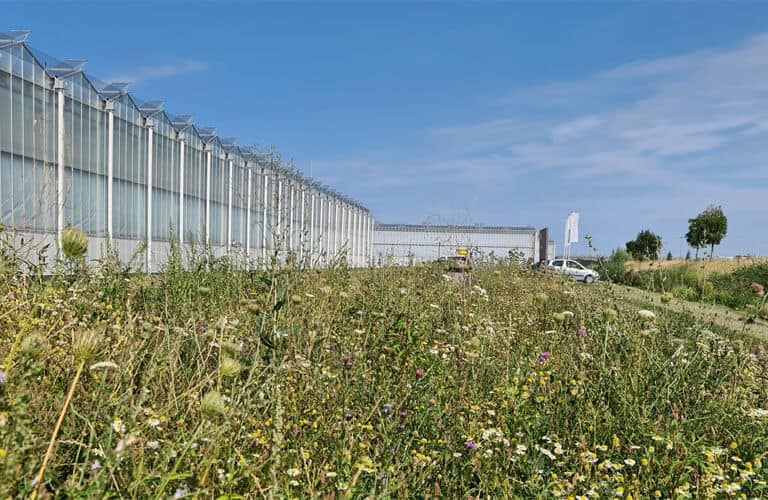Last season, Duijvestijn Tomatoes, along with WUR, Greenport West-Holland, the province of South Holland, and three fellow growers, started the pilot “more biodiversity in and around the greenhouse”. The aim of this pilot is to see how the horticulture sector can increase biodiversity in and around the greenhouses without compromising the plant health of the crop inside.
Pest insects
Increasing biodiversity may lead to more (pest) insects appearing inside the greenhouse. Inside the greenhouse, we also work with beneficial insects to combat pests. However, when the pest pressure becomes too high, these natural enemies can no longer handle it, and that may mean that chemicals need to be used to protect the crop in the greenhouse. And that is the last thing we want. Moreover, it defeats the purpose.
Pilot
So, we started a pilot to see how and if we can steer this process. We have sown and planted a significant number of square meters with a special mixture of native flowers and plants that are favourable to beneficial insects (natural enemies) and less favourable to pest insects (insects that are harmful to crops). By monitoring the effects, we can increase biodiversity around our greenhouses in a targeted manner without compromising the ecological balance inside the greenhouse. So, it’s a win-win situation! This pilot will run until the fall of 2027.
Why is biodiversity important?
Biodiversity is important for keeping the earth and its ecosystems healthy. In recent years, biodiversity has been in decline, and many species of plants and animals are at risk of extinction. With this pilot, we collect valuable information that can be applied to all agrcultural and horticulture businesses in the Netherlands and beyond. This way, we contribute to greater biodiversity, benefiting both people and nature.

